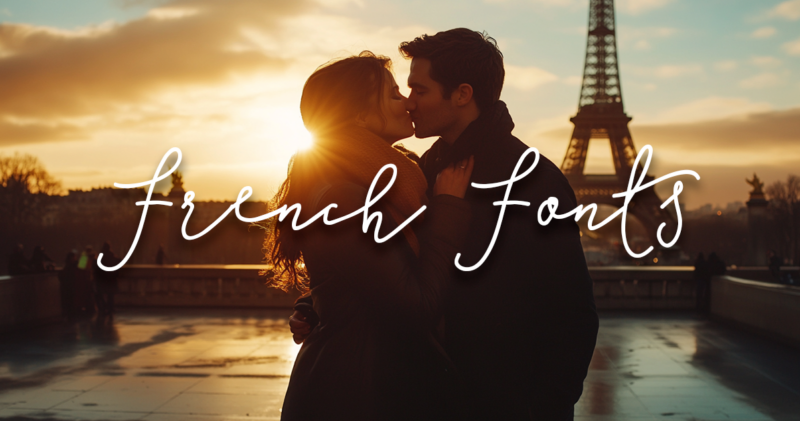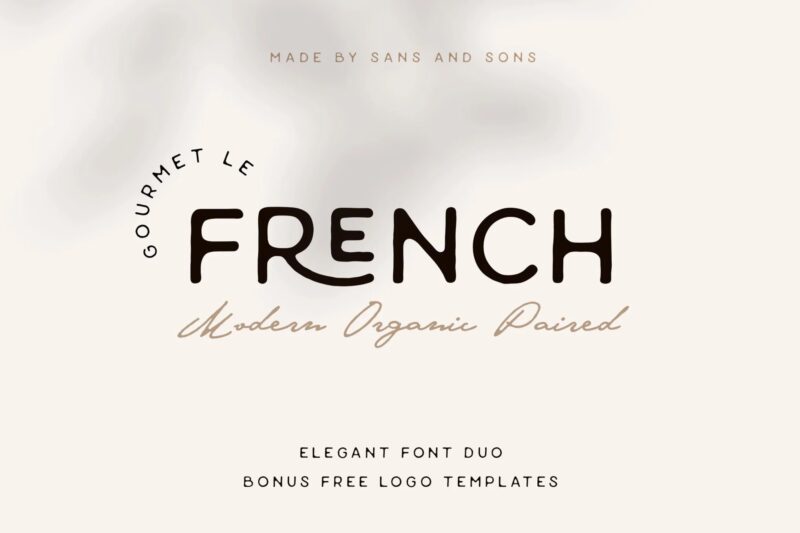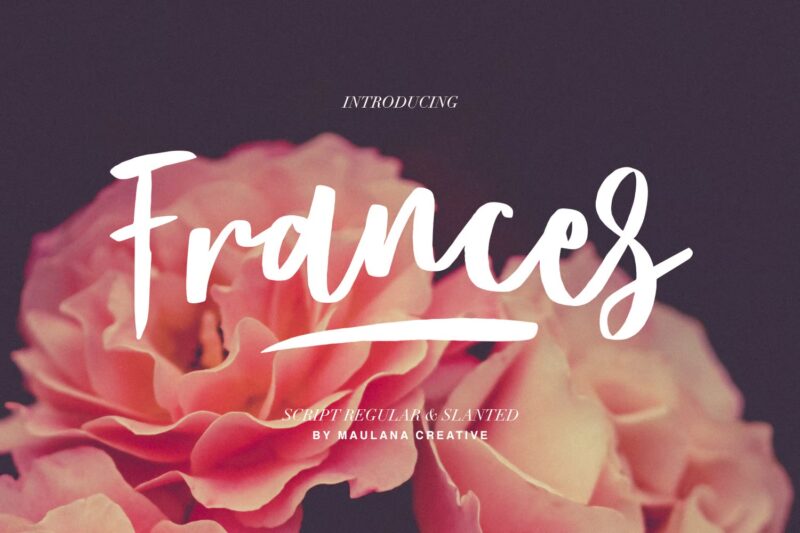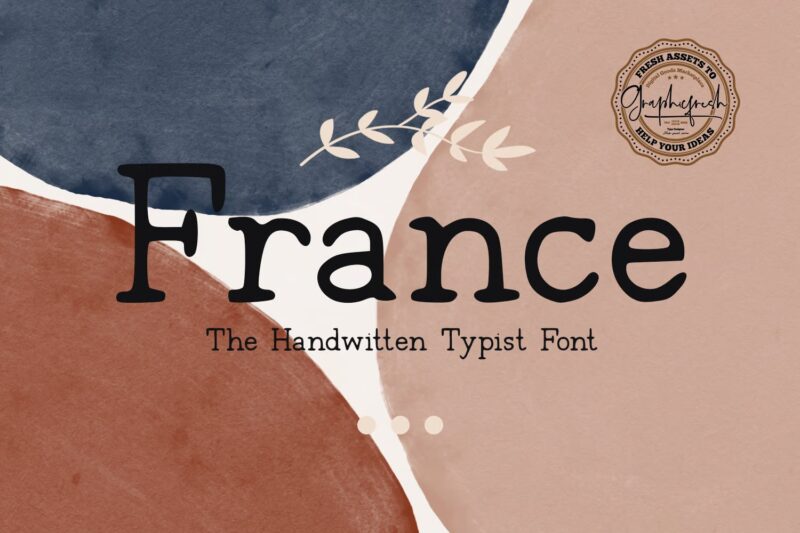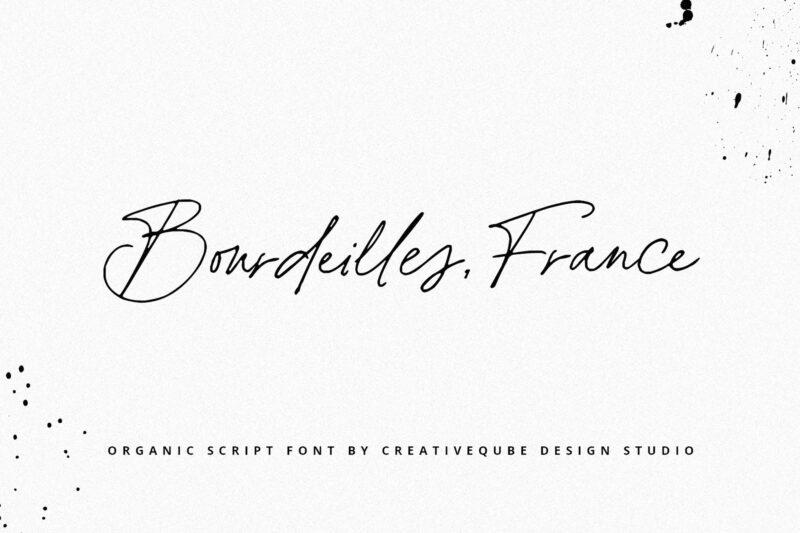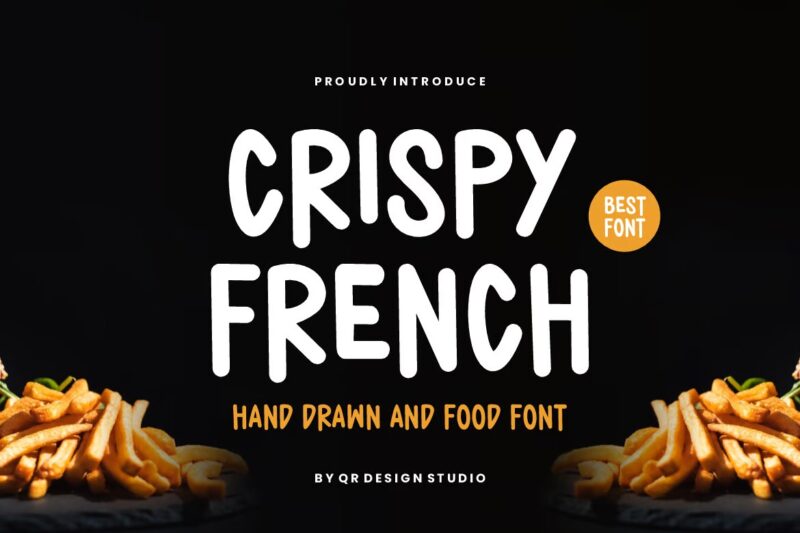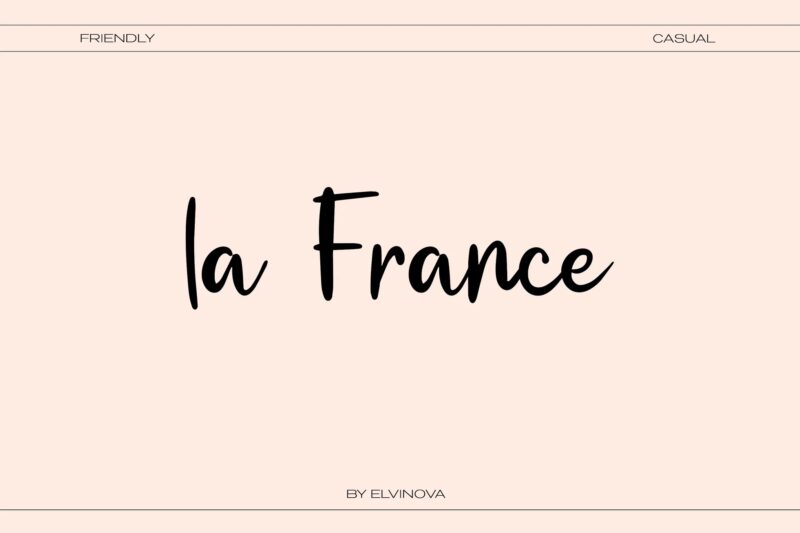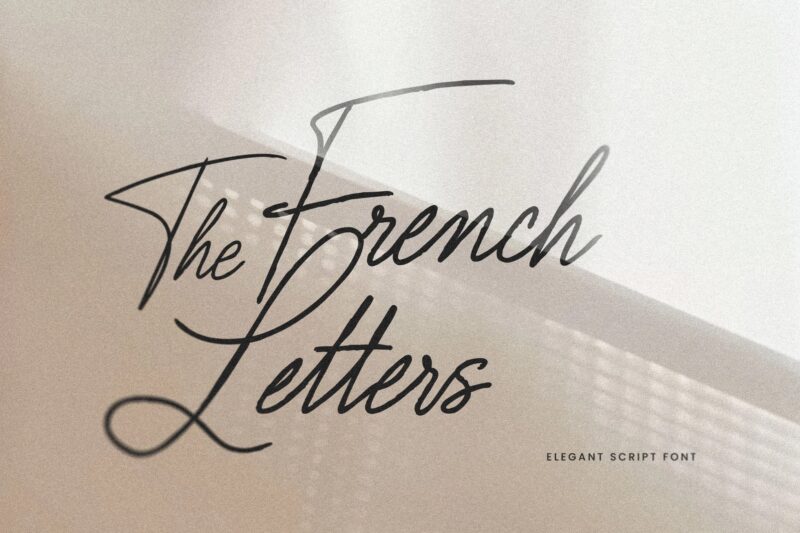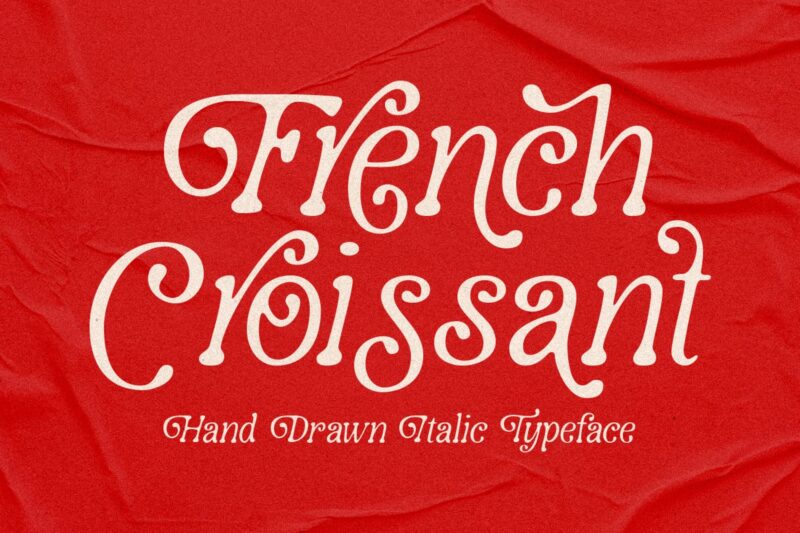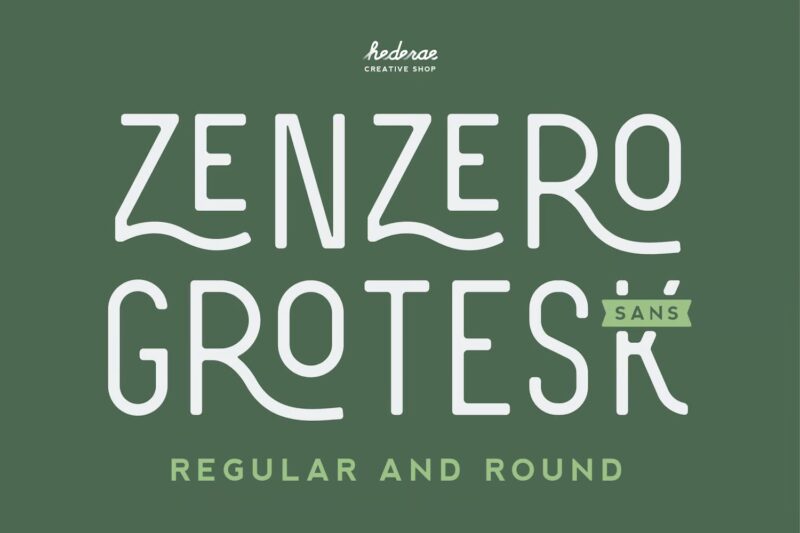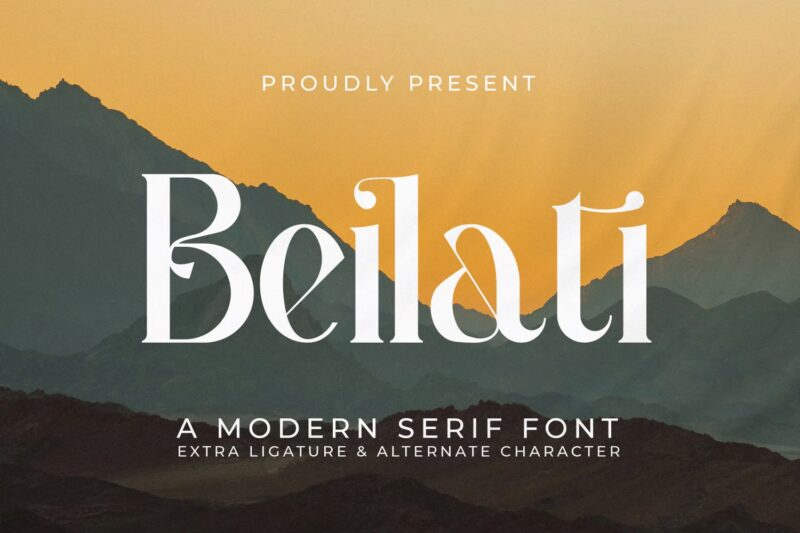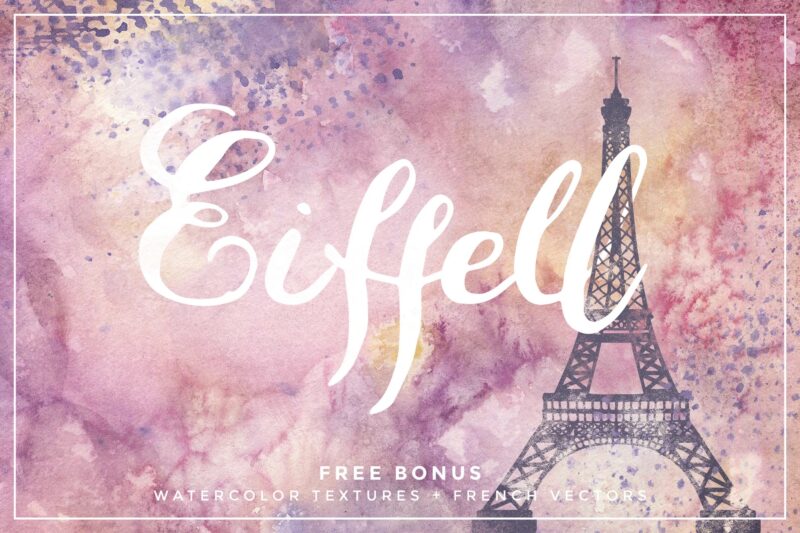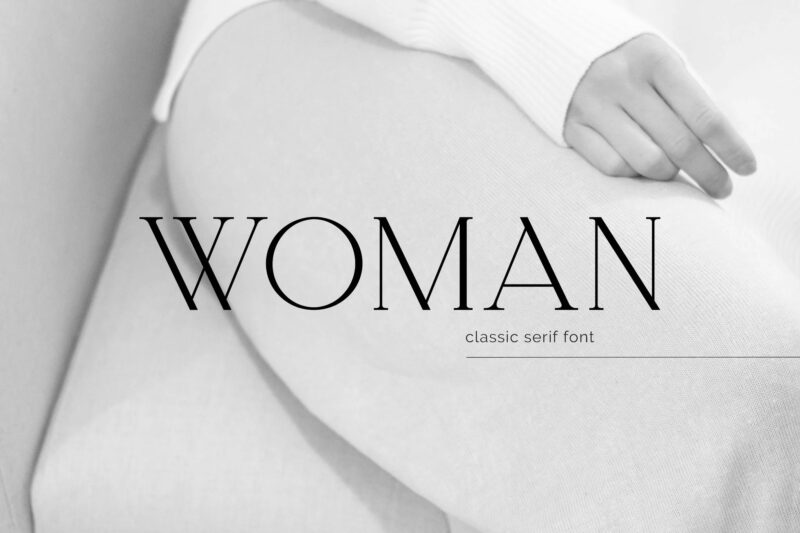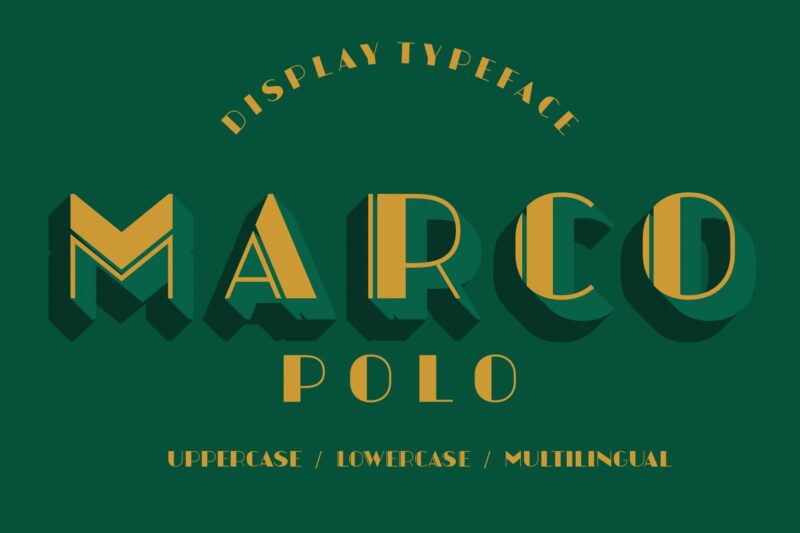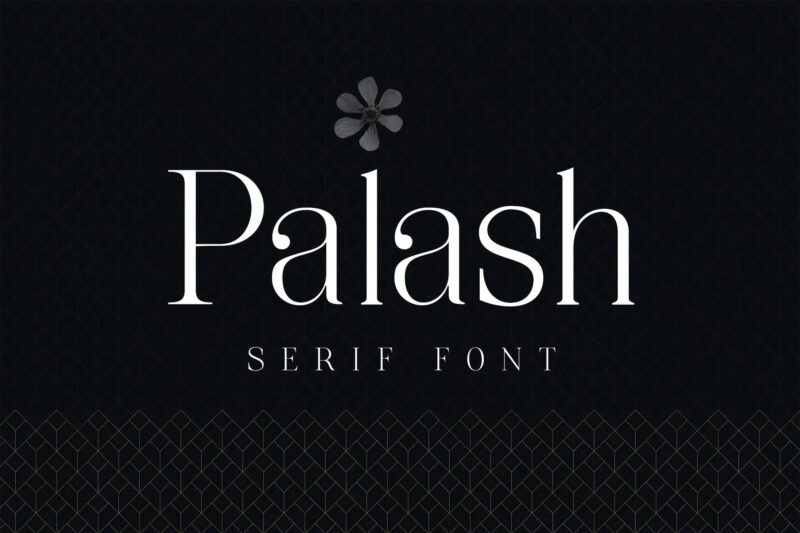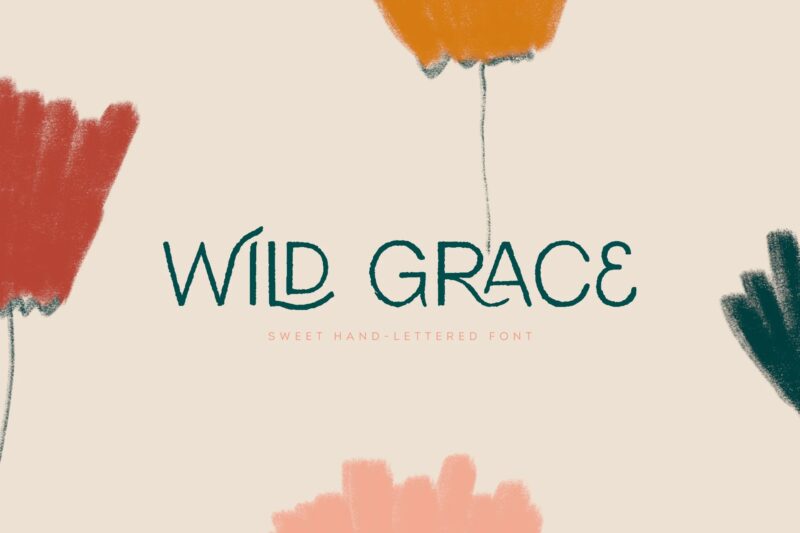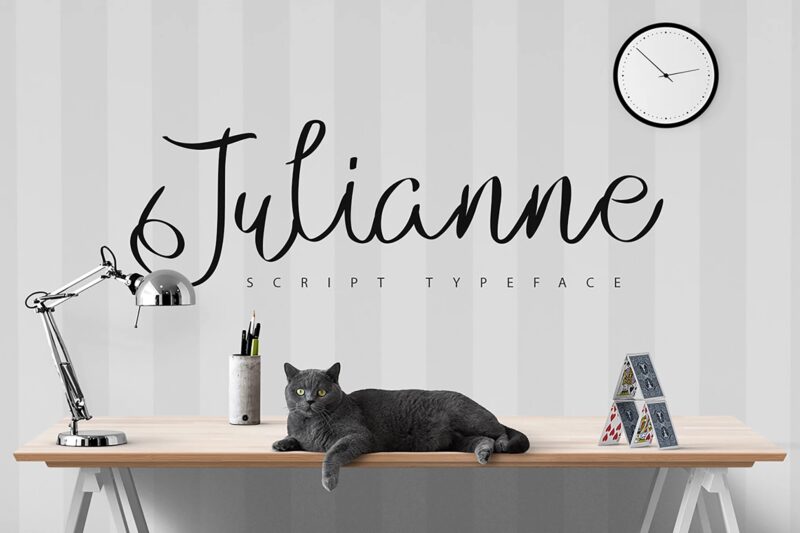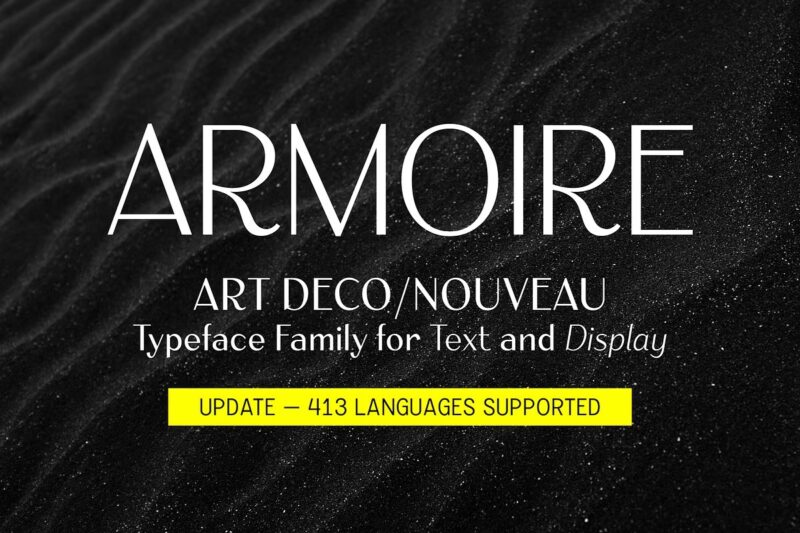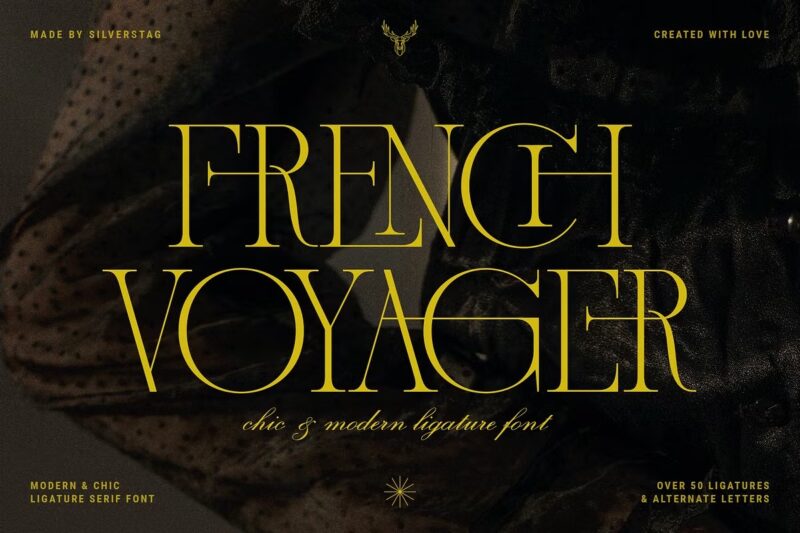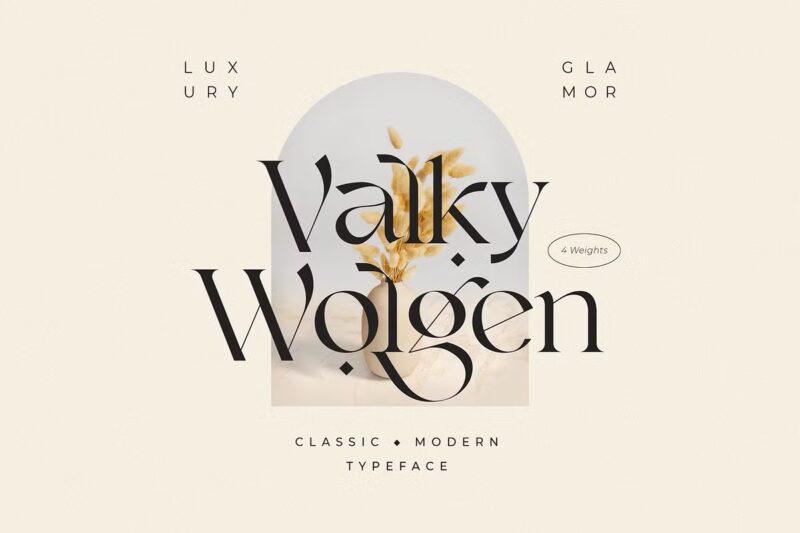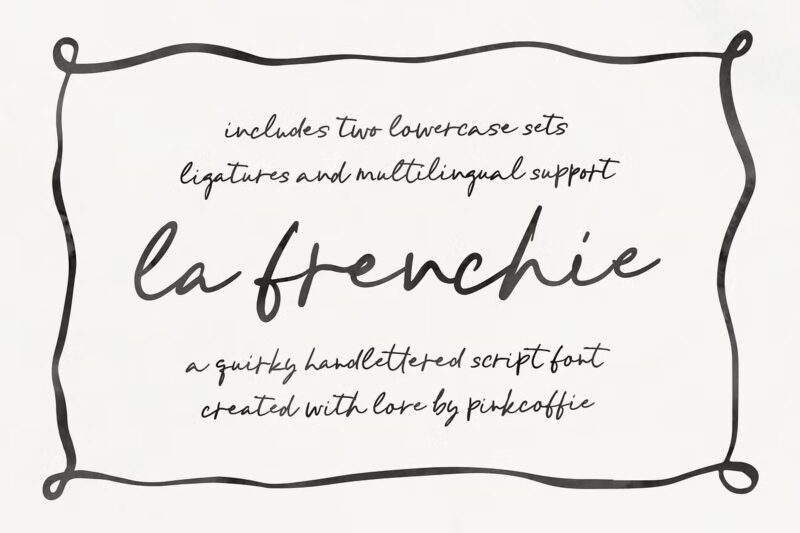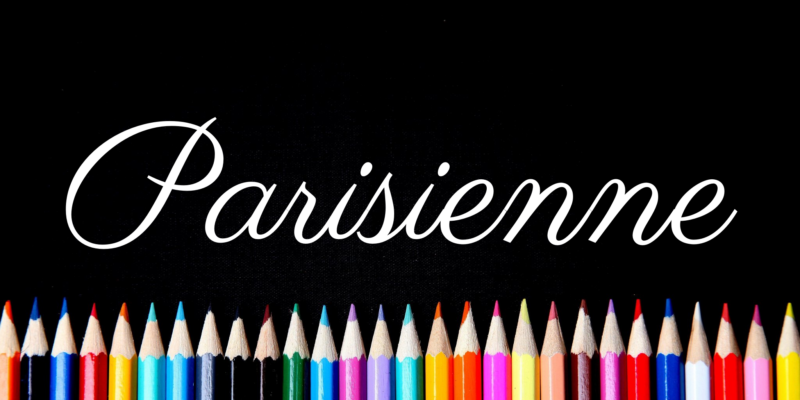In this article:
- Top French Fonts: Best Picks for Every Style
- Features to Look for in French Fonts
- Applications for French Fonts
- Tips for Using French Fonts
- Fin (The End)
French fonts have long been a symbol of elegance and creativity. Did you know that the classic Didot typeface was developed from the late 18th century into the early 19th century? Its enduring style still makes it a favorite in high-end fashion today! French fonts not only add a touch of sophistication but also carry a rich history of innovation in typography.
In this article, I’ll dive into the unique charm of French fonts, showing how they blend tradition and modernity to elevate your designs. Ready to explore the world of French typography? Let’s get started!
Top French Fonts: Best Picks for Every Style
1. Gourmet Le French
A modern elegant duo combining sans and script fonts, perfect for adding Parisian sophistication to branding and invitations.
2. Frances Modern Font
A versatile font with an authentic handcrafted feel, ideal for signatures, stationery, and logos.
3. France Typeface Font

Get 300+ Fonts for FREE
Enter your email to download our 100% free "Font Lover's Bundle". For commercial & personal use. No royalties. No fees. No attribution. 100% free to use anywhere.
Inspired by typewriter letters, this font maintains an authentic hand-textured look, perfect for branding and invitations.
4. Bourdeilles France Script Font
An organic handwritten script font with extra ligatures, ideal for logos, quotes, and wedding invitations.
5. Crispy French – Hand Drawn & Food Font
A hand-drawn font perfect for food-related projects, adding Parisian café flair to menus and packaging.
6. La france – rustic font
A simple cursive font with a rustic charm, perfect for adding a touch of French countryside to your designs.
7. Francy Modern Sans Display Font
A modern sans display font excellent for creating impactful quotes, logotypes, and magazine headers.
8. French Marble – Playful Font
A playful handwritten font perfect for product packaging, designs, labels, and special events.
9. The French Letters Elegant Cursive Script Font
A sophisticated script font with over 100 ligatures, perfect for adding Parisian charm to various projects.
10. French Croissant – Hand Drawn Display Fonts
A passionate, hand-drawn typeface with an italic style, suitable for branding designs, logos, and posters.
11. Zenzero Sans
An industrial-based font with endless possibilities for writing words, texts, or paragraphs, featuring numerous ligatures and stylistic alternates.
12. Beilati
A modern serif font perfect for creating beautiful and elegant headlines and logo designs, especially effective in large sizes.
13. Eiffell Brush Script Font + Extras
A gorgeous, hand-brushed typeface with French charm, perfect for logos, posters, and typographic designs.
14. Woman Serif Font
A serif font family with regular, italic, and bold styles, supporting multiple languages for versatile design use.
15. Marcopolo
A contrast deco style font with unique lowercase and multilingual support, perfect for industrial-inspired designs.
16. Yumina – Script Font
A script font suitable for greeting cards, branding materials, and quotes, featuring over 249 glyphs and multilingual support.
17. Palash – Serif Font
A great typeface for creating beautiful and elegant headlines and logo designs, working best with large sizes and wide spacing.
18. Sweet Handwritten Font
A handwritten font with ligatures, perfect for adding a personal touch to various design projects.
19. Julianne
A thin roundhand handmade font, perfect for delicate designs and available in multiple formats including webfont.
20. Armoire: Art Deco font family
An Art Deco-inspired font family blending elegant rationalism with ornamental craftsmanship, suitable for both display and text usage.
21. French Voyager – Chic Ligature Serif
A nostalgic serif font revival with over 60 ligatures, perfect for creating vintage-inspired, chic designs.
22. Valky Classic Modern Typeface
A versatile serif typeface with beautiful ligatures and alternative glyphs, ideal for logos, editorial projects, and product packaging.
23. The Paris Lamore Duo Typeface + LOGO
A minimalist modern elegant font duo with a signature script, perfect for branding projects and logo design.
24. La Frenchie | Handwritten Script
A casual handwritten script font inspired by wedding invitations and quirky art prints, perfect for adding a personal touch to various projects.
25. Parisienne Font
A casual connecting script inspired by a 1960s Bra advertisement, perfect for adding a touch of vintage Parisian charm to your designs.
26. Goldoni Font
An elegant titling serif with vertical emphasis, inspired by Italian luxury brands but equally suitable for Parisian-style designs. Perfect for luxury logos, newspaper displays, and movie posters.
Finding the right font doesn’t have to be a nightmare, but it can be. Trust me, these picks have saved me from many last-minute font scrambles. Whether you’re looking for something modern, vintage, or just plain fun, these fonts will have you covered.
Features to Look for in French Fonts
When exploring French fonts, key features can make or break your design. From my experience, knowing what to look for can prevent serious frustration.
A. Ligatures and Alternates
Let’s start with ligatures and alternates. Ligatures are fancy character combinations like “fi” or “fl,” designed to look nice together. They add elegance to your text. Alternates are different versions of characters that can give your text a unique flair.
- Ligatures: Look for fonts that include them to enhance readability and style.
- Alternates: Check if the font offers alternate characters for added personality.
I once struggled with a font missing these features—it looked fine but lacked polish. To make your French font stand out, ensure it includes ligatures and alternates. They’re the key to making your design pop.
B. Language Support
Next up is language support. If you’re working with French text, proper support for accents—like é, à, and ç—is essential. I’ve faced headaches with fonts that didn’t handle accents well. It’s like writing a love letter in French and forgetting the accents—just doesn’t work.
- Accents: Make sure the font supports all necessary French accents for accurate and stylish text.
Always check if the font supports French accents. A quality font will ensure these accents are clear and seamlessly integrated into your design.
C. Versatility
Lastly, consider versatility. You might need a font for a chic Parisian café menu, a romantic wedding invite, or a stylish fashion magazine. So, you need a font that’s flexible enough for various styles.
- Different Contexts: Choose a font that works well in both formal and casual settings.
- Print and Digital: Ensure the font is adaptable for both print materials and digital media.
I’ve had fonts work well for some uses but not others. Choose versatile fonts that adapt to both formal and casual settings, as well as print and digital formats.
Applications for French Fonts
A. Branding and Logos
French fonts in branding and logos? They’re perfect for adding that touch of elegance. For example, you can use a sleek serif for a luxury brand, and the whole vibe will just click. But not all fonts work for every brand.
Test fonts across all platforms; what looks great on a big screen might not work well when scaled down.
- Test your logo in different sizes.
- Serif fonts add a luxurious feel.
- Avoid overly ornate fonts for clarity.
B. Wedding Invitations
French fonts are like the secret ingredient for wedding invitations. I’ve seen couples fall in love with a simple, flowing script. It adds romance instantly! But not every script is readable. Trust me, I’ve picked beautiful ones that made people squint.
So, balance is key—beautiful yet clear.
- Use romantic script fonts.
- Always check readability.
- Test the print to see how it looks on paper.
C. Packaging Design
Packaging? French fonts work wonders here. For example, you can use it to brand a candle company, and the switch to a French-style font will make all the difference. Suddenly, it will feel fancy.
But too much detail in the font can backfire. Keep it clean so your product still stands out.
- Serif fonts elevate packaging.
- Be careful with overly intricate fonts.
- Always do a physical mock-up test.
D. Digital Media
French fonts on websites? They can look amazing… but only if they work on mobile. I learned this the hard way! For example, you can design a site with a thin, delicate font, and it will look flawless on desktop—but on mobile? Total disaster.
Lesson learned: test everywhere.
- Choose bold fonts for headlines.
- Always test on mobile.
- Thin fonts may not work well on smaller screens.
E. Print Materials
For print, French fonts add a knowledgeable touch. For example, you can use it on a magazine layout, and using a French font will make the feature story feel classy. But, don’t forget to check the print quality. Thin fonts can fade or look washed out in print.
Always print a test run before committing.
- Bold fonts grab attention in posters.
- Serif fonts look great in magazines.
- Print a sample to check quality.
Tips for Using French Fonts
A. Pairing Suggestions
Pairing French fonts is all about balance. Avoid making fonts compete for attention, as it can look messy. I love combining a classic serif like Garamond with a modern sans-serif like Helvetica for a timeless yet fresh look. For a Paris café vibe, pair Parisienne with Futura—it’s like matching a croissant with espresso!
- Mix Garamond with Helvetica for a timeless yet modern look.
- For a Paris café vibe, try Parisienne with Futura.
- Avoid using more than 2-3 fonts to keep the design clean and polished.
Avoid using too many fonts—three or more can look chaotic. Stick to two or three max for a polished design.
B. Best Practices for Readability
Always test fonts for readability. A delicate cursive font might look good on desktop but be unreadable on mobile. For thin or decorative fonts, bold headlines and use regular weight for body text to enhance readability on smaller screens.
- Test readability on different devices (especially mobile!).
- Bold, thinner fonts are used for headlines to ensure clarity.
- Use regular weight for body text for better readability.
Don’t forget to check if your font supports French accents. Adding accents manually later can be a hassle. Choose a font with built-in accent support to save yourself the trouble.
- Ensure the font includes French accents (like é, ç, à).
- Avoid manually adding accents—it’s tedious and prone to errors.
- Test early to catch any missing diacritics before you’re too far into the design.
Fin (The End)
In summary, French fonts bring an incredible blend of tradition, elegance, and modernity to any design. Whether you’re looking for playful script fonts like Allura or refined serifs like Garamond, the right font can elevate your project, adding sophistication or a whimsical touch.
As you apply these insights, customize your font choices based on your specific needs—whether it’s for branding, invitations, or digital design. Don’t forget key considerations like ligatures and alternates, which can add an extra level of refinement to your text.
Always prioritize readability and consider the tone you want to convey in your project. And, of course, if you’re using paid fonts, ensure you follow proper licensing for commercial use to stay ethical and legally compliant.
Now, I’d love to hear from you! Have you used any of these fonts before? Do you have a go-to French font that always delivers? Share your thoughts or tips in the comments below!

